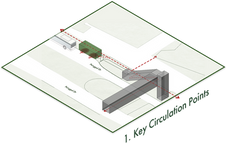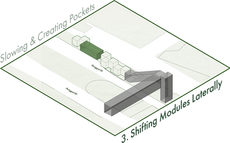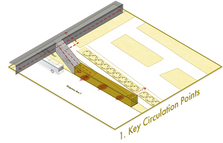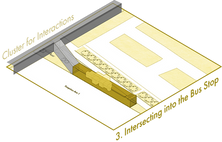
STITCH/SHIFT
Oasis Stn Exit B/Blk 617d Bus Stop
Temasek Poly Bus Stop
Aft Capital Twr Bus Stop
Stitch/Shift is my final year project completed at LASALLE. The project aims to redefine fashion stores into dynamic spaces for the new sustainable shopping economy in the face of unsustainable consumption of fast fashion. These spaces may be located near key transit hubs and office districts, providing consumers with access to rental services for outfit changes on the go, as part of creating spaces for clothing curation, learning and connection. Through designing spaces that mould into the different scenarios in the contexts of a typical Singaporean lifestyle, it seeks to visualise and support a future where the circular fashion economy is the norm in everyday transit spaces, in different contexts like residential, educational and CBD areas.
The project was completed with Rhino, Twinmotion and Photoshop.
MODULES I CIRCULAR ECONOMY I LIFESTYLE
INITIAL IDEA: SPECULATIVE COLLAGES
What would the future of fashion retail stores look like?
 |  |  |  |
|---|
From the research into current and upcoming solutions in the retail landscape, decentralisation and adaptation of stores in locations closer to consumers have been on the rise. Thus, the key idea of these speculations is envisioning retail fashion stores as an ecosystem of circular fashion programmes running throughout Singapore, with activities like clothing swaps, rental, and upcycling workshops along community and transit points.
Design Intent: Circular Fashion Economy
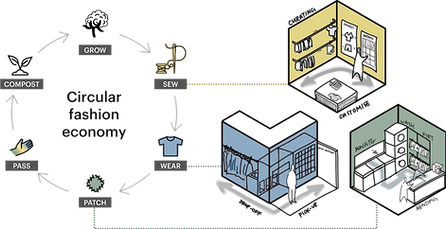
The project is looking towards the future of fashion retail stores, where they play a bigger part in fostering sustainable consumer behaviour and redefining the shopping experience. As such, the goal of this project is to be adaptable and easily accessible to a wide range of demographics. Thus, Stitch/Shift looks toward envisioning circular fashion experiences as part and parcel of daily life, adapting different formats of programmes into different contexts.
Research Video Link:
Scenarios: Clothing Swaps, Outfit Curation, Rental

RESIDENTIAL SITE
Oasis Stn Exit B/Blk 617d Bus Stop | Target Demographic: Surrounding Residents
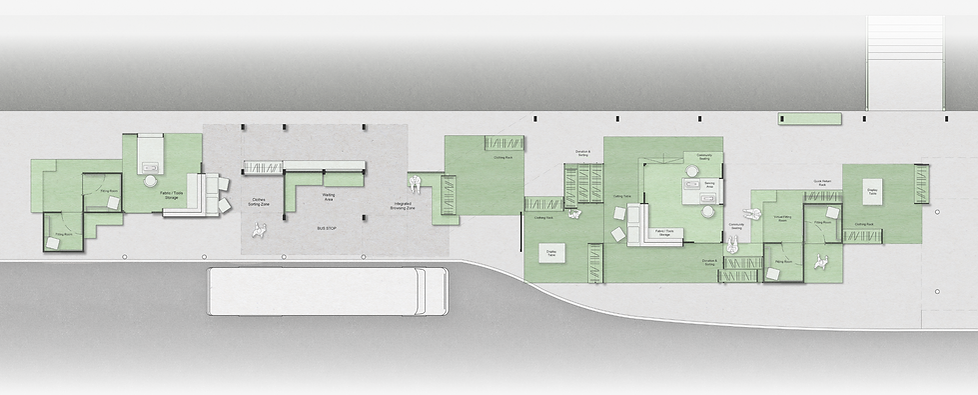
A

B

C

D
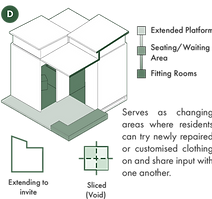
Bus Stop
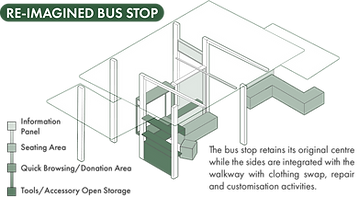

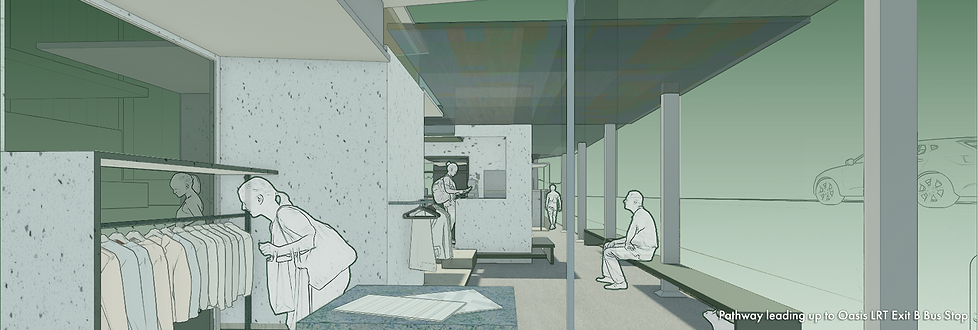

Introducing passers-by to communal activities like clothing donation and customisation upon alighting, encouraging interactions and participation

Openings that allow participants to peer out of the modules and see when their buses arrive, encouraging them to participate in activities while waiting

Encouraging nearby residents to gather between the modules and hold casual conversations, creating connections over threads
Using the pathway leading up to the bus stop, the modules carve out spaces for the process of donating, browsing, fitting, and customisation of clothing to highlight the importance of community in the circular fashion economy. As a reflection of a routine lifestyle, the programmes are kept analogous to the experience of stores and wardrobes we have today, emphasising the fact that activities for sustainable consumption can start small and simple with what we’re familiar with.
EDUCATIONAL SITE
Temasek Polytechnic Bus Stop | Target Demographic: Students
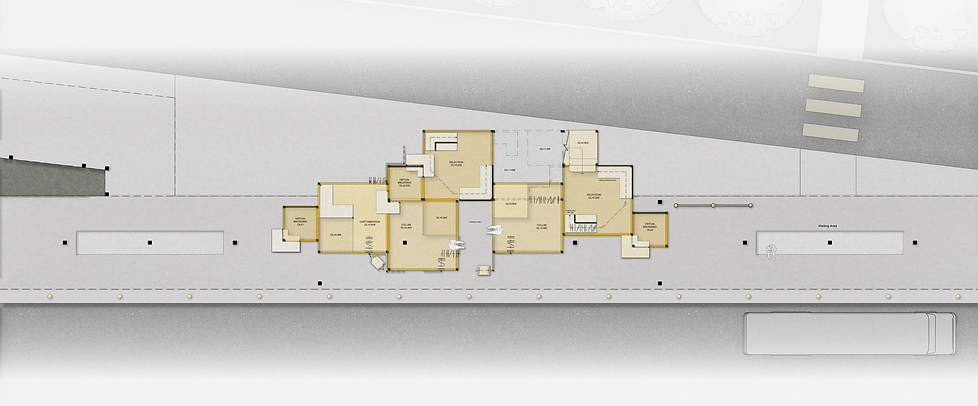


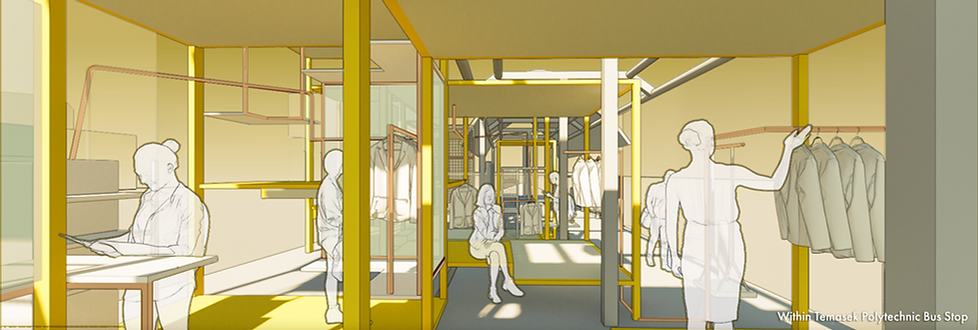

Modules for quick donation, outit curation and styling, all-in-one

Integrating the customisation and/or collaboration platforms with the structure of the modules for quick activities

Integrating the staggered platforms with seating for waiting and casual hang out for the students
As the modules for the educational site follow a more flexible layout, the open areas allow for students to interact with the modules freely and choose where they wish to start. The key areas include the virtual screen for quick outfit curation and styling while keeping track of available clothing, and furniture for collaboration in outfit customisation/modification according to the student’s liking. Using the openness and staggered platforms of the modules, spaces for interaction and casual collaboration are formed as well.
CENTRAL BUSINESS DISTRICT (CBD) SITE
Aft Capital Twr Bus Stop | Target Demographic: Office Workers
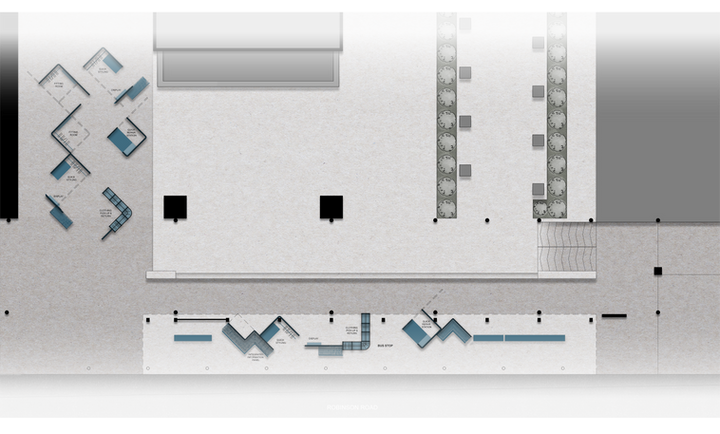

B
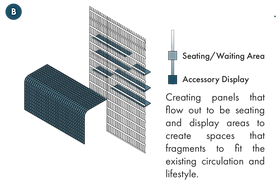
B1
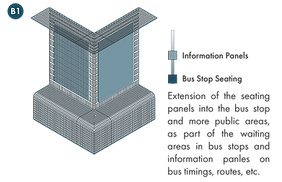
A

C

D
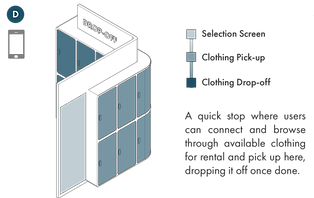
E
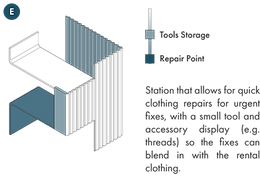
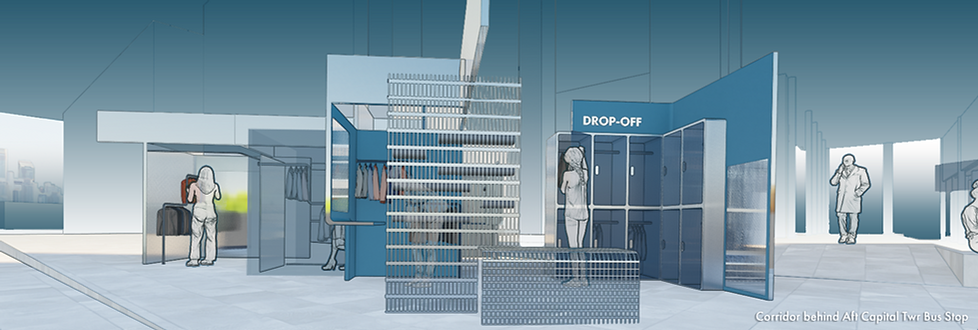

Modules are opened up for quick clothing drop off and pickup

Fragmenting the modules for a seamless rental, styling and repair experience

Showcasing the fragmented modules with gaps and openings that still create pathways
As the modules are fragmented in different points, the experience when alighting would be access to parts of the module that allow for the pick up and return of clothing, as well as a space for quick styling and browsing of rental clothing. Along the main corridor, parts of the module fragments are exposed, which allow for indirect interactions and exposure to the idea of circularity in fashion, with the layering of fragments creating pathways that encourage an induction into the modules for pause and interaction.



